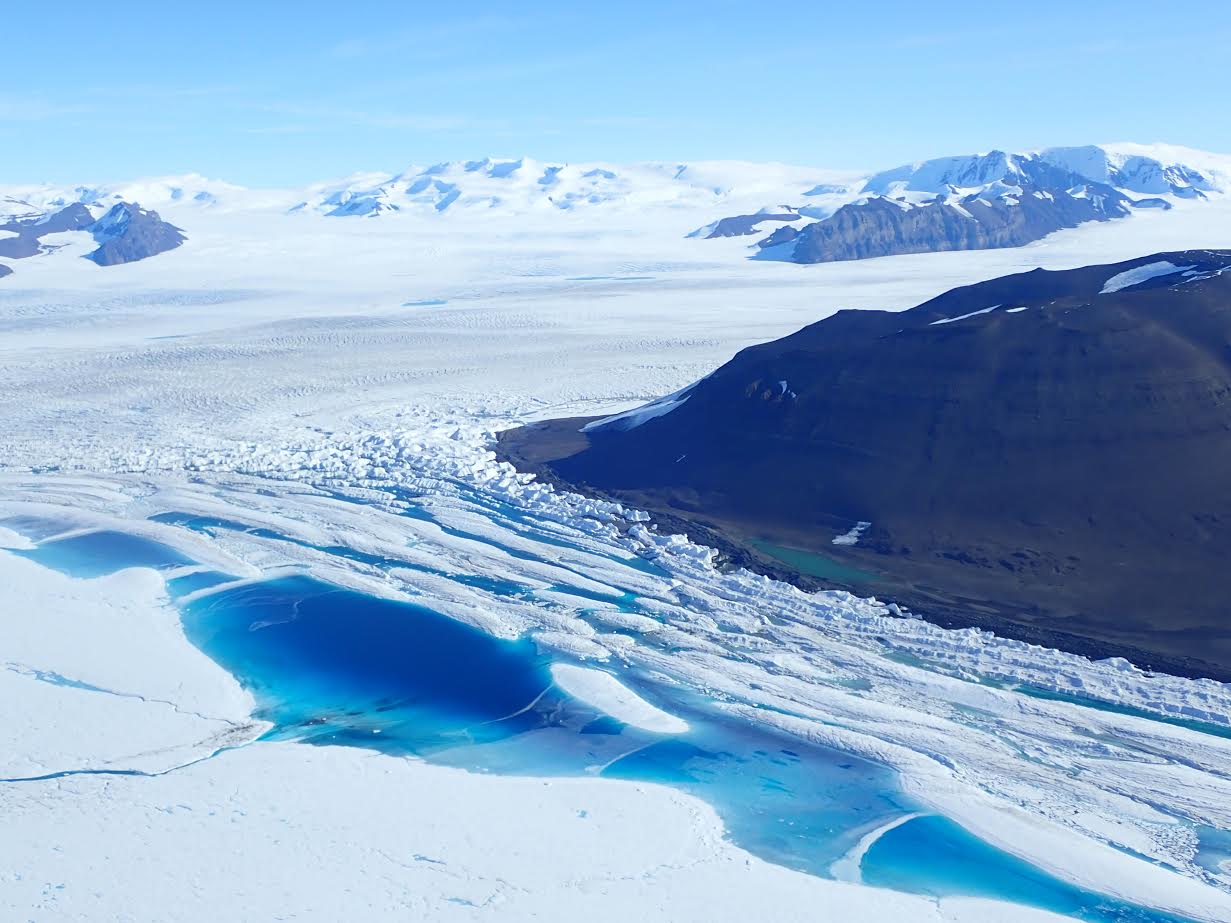Researchers have evidence that Antarctic ice shelves are fracturing under the weight of the meltwater lakes that sit on top of them — a development they say may have implications for climate change.
Ice shelves that collapse contribute to global sea level rise, said Alison Banwell, a scientist at the University of Colorado’s Cooperative Institute for Research in Environmental Sciences and the lead author of a study that details the findings.
Researchers previously collected data showing that an ice shelf would bend in response to a lake forming on top of it, but never had evidence of an actual fracture formation, Banwell said.
“When (meltwater lakes) get really full of lots of water and then drain, they basically alter the stress regime of ice around them and can actually help to trigger glacial break-up events,” Banwell said.
Banwell and her colleagues first traveled to the George VI Ice Shelf on the Antarctic Peninsula in November 2019 to investigate the impacts of surface meltwater on ice shelf stability. First, the team identified a depression or “doline” in the ice surface, left by a lake that had previously drained, where they thought meltwater was likely to pool again on the ice.
The team left at the start of the pandemic and returned to the ice shelf in November 2021. Only two of the GPS sensors and one time-lapse camera they had left on the shelf remained, while two other GPS and all water pressure sensors had been flooded and encased in solid ice, according to CIRES. Fortunately, the surviving instruments captured the vertical and horizontal movement of the ice’s surface and images of the meltwater lake that formed and drained in the doline during the record-high 2019-20 melt season.
The new lake drainage data, which was published in the Journal of Glaciology in May, will help scientists predict which Antarctic ice shelves are the most susceptible to collapse in the future because of climate change, according to a news statement about the research.
“There’s a lot of uncertainty surrounding when the Antarctic ice sheet will break up in the future due to climate change, and it’s hard to run models and simulate that at the moment,” Banwell said. “We hope that the kind of field data we’ve collected will help to train those models in the future.”



 PREVIOUS ARTICLE
PREVIOUS ARTICLE
